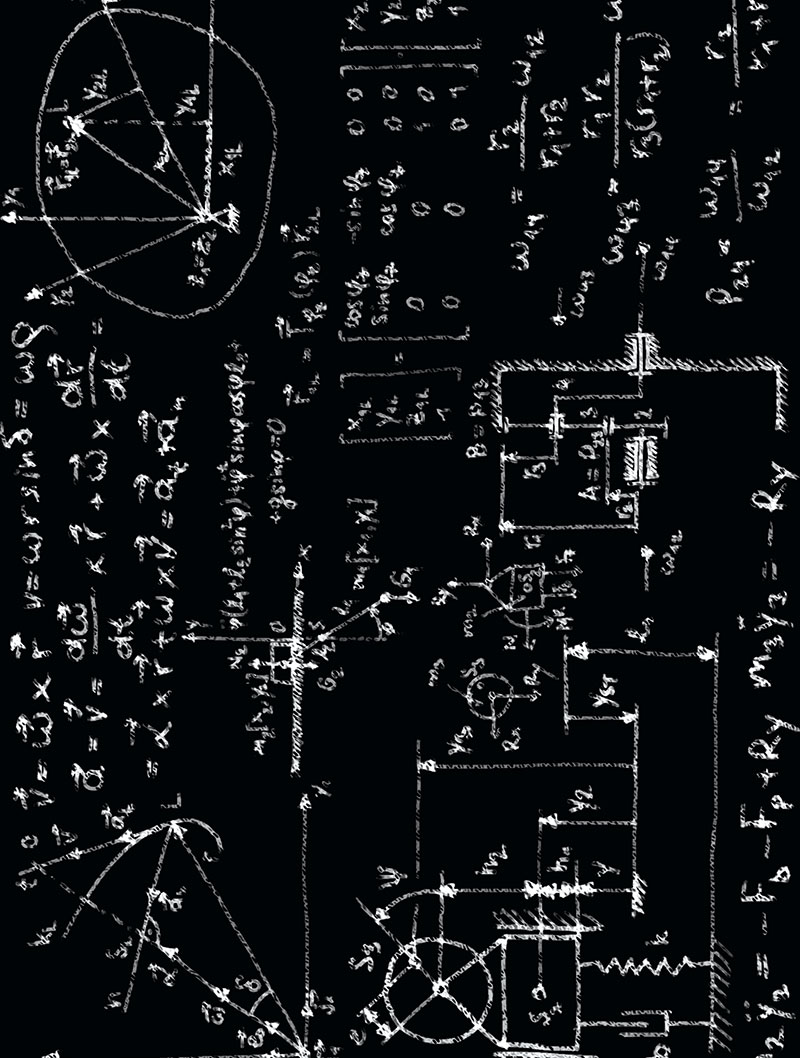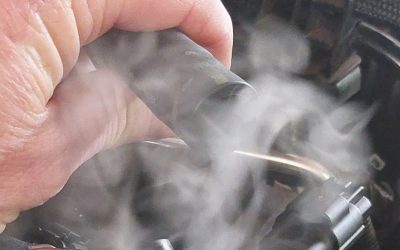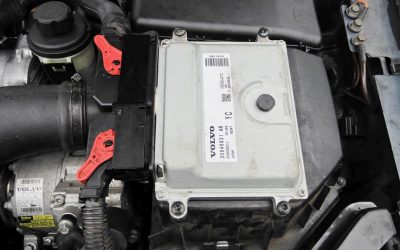You’ve probably never given this stuff enough thought to prevent catastrophic engine damage.
Engine lubrication: We love it when it’s good to us and hate it when it lets us down. It keeps our parts alive, breaks our little monsters into thousands of pieces, makes us winners or losers, and it falls into the category of Big Science while being a little vague and hard to wrap heads and hands around.
Volume and pressure
Let’s start with this: It’s all about the volume (gallons per minute) of what we pump, and the composition or quality what we’re pumping (we’d like to have pure, unaerated oil, if we could get it).
We shouldn’t care as much about pressure (pounds per square inch) as we’ve been taught, beyond having enough pressure to overcome resistance to flow without having so much that we waste power that could otherwise be used to propel the machine in building excess pressure. Pressure is simply the easiest measurement we have access to that tells us something about the volume of oil we’re moving inside the engine.
The pressure we read is the result of the volume of oil being pumped into the various oil delivery channels of the engine and ultimately to the sliding, rolling, and wiping surfaces that require oil, and how much oil is leaked away at all the various bores and crevices. Every engine has a oiling map — a circuit through which the oil flows and is delivered to all those highly-loaded surfaces — and you should examine and map out those passages every time you build so you understand where the oil goes and in what order it’s delivered throughout your engine. A good understanding of the oil map could uncover design flaws or areas where small improvements could have a dramatic positive effect on engine performance or longevity.
Oil pressure is the result of the volume of oil that’s pumped and the sum of all the internal clearances (leaks) to which the oil is supplied. An oil pump doesn’t know pressure from howling at the moon, and, in fact, if you just run it outside of an engine it simply supplies volume in gallons per minute in free flow, until such time as you begin to throttle back on the discharge. Then, and only then, does the pressure begin to build until the relief system comes into play, which then dumps volume back to the pan or recirculates volume internally from the discharge back into the suction side in an effort to match downstream oil volume demand with oil pump volume supply.
An oil pump has to be sized to provide sufficient flow at idle, when pump speed is lowest. Factory pumps are typically 40-50% larger than required because they are designed to provide enough capacity to make up for engine wear over many thousands of miles. Racing pumps can be sized according to application by increasing or decreasing the size of the pumping elements.
At speeds higher than idle, the pump supplies more volume than the engine requires, so the relief valve opens and dumps the excess volume. In doing so, it “sets” the peak oil pressure reading. Oil pumps are of the positive-displacement variety. What gets pulled in must be discharged (within reason; as pressure builds there is a small amount of slip that occurs inside the pump, but for all practical purposes what goes in must come out). A positive-displacement pump moves a fixed volume of oil with each rotation, and increasing the speed of rotation increases the output volume proportional to the speed. An engine oiling system requires roughly two gallons of oil per minute at idle and perhaps as much as 15 gallons per minute at maximum operating speed, and the point at which the volume output curve exceeds the volume demand curve is where the relief valve begins to operate, dumping excess volume, which shows up as a controlled maximum operating pressure. Think about it: Putting in a heavier spring or increasing the pressure setting just means that you delayed the relief valve opening, which just pushed more volume out into the same size restrictions of the engine. Pushing more volume through the same opening raises the pressure applied to the opening and changes the flow rate through each leak point because more pressure exerted across the same diameter hole will increase the flow rate through the hole. You can have too much flow. Flow rates that are too low won’t put enough oil in the bearing to either lubricate or carry away heat, but high flow rates end up costing you in terms of pumping losses, windage, and aeration.
Here’s why: A positive-displacement pump will make as much pressure as the power applied to it will allow, right up to the point where the pump or discharge piping fails. If you throttle the discharge on a positive-displacement pump, eventually you either exceed the power available to drive it, or you blow the pump housing and discharge piping to pieces.
So how much pressure do we need? Well, it depends! The standard of 10 pounds per square inch per 1000 rpm still applies for nearly all applications, unless you’re moving up into Formula 1 or Top Fuel. There are a lot of urban legends about washing out the engine bearings with excess oil pressure, something I have never seen and cannot say with any certainty can occur. In fact, I’m willing to bet that it doesn’t happen, and those who thought that’s what they saw misinterpreted the results. I’d bet that it was some form of hydrodynamic cavitation at work in the bearing interface. If you look at the localized pressures exerted on an engine bearing, it measures in the tons per square inch! I find it hard to believe that high oil pressures, even as much as 200 psi, will add much at all to bearing erosion, particularly on a racing bearing with a thin and robust overlay. It will heat up the oil, increase flows rates and rob power, but I’d have to see the erosion damage to believe it. Call me a skeptic…
What we do know is that some engines require very high oil pressures to force the liquid lube into the heavily-loaded crank/bearing interface. Top Fuel, for example, runs pressures over 150 pounds per square inch, and F-1 engines are often in the 120-130 psi range, so the required or expected oil pressure an engine requires is specific to the application and possibly to the type and weight of lubricant that is used.
While we typically check oil pressure at the beginning of the oil map, somewhere close to the pump, in my opinion pressure should also be measured at or near the end of the oiling map if there’s access if for no other reason than to provide a baseline reading for what the pressure drop across your new build looks like (which might provide you with a clue to overall engine health if you continue to check it periodically as the season progresses).
Cavitation and aeration
There are two other effects we have to look at in a working engine oiling system: cavitation and aeration. Cavitation can occur in any liquid and the effects of unwanted cavitation are officially categorized as “not good.
A liquid can boil at any temperature if you reduce the pressure enough. We use this principle to remove moisture from the air conditioning system by pulling a deep vacuum, which results in any trapped water being boiled off, even at low ambient temperatures. Cavitation occurs when some disturbance or restriction or localized low-pressure area causes the liquid to fall below the boiling point on the pressure-temperature graph for the conditions of the fluid being pumped, and vapor bubbles form in the liquid. In the oiling system, it can be suction cavitation, caused by low pressure or the pressure drop on a sharp edge or orifice, or discharge cavitation, where the internal relief system bypasses at such a high rate that the oil temperature rises. At high internal flow rates, the small clearances of the pump act as a venturi and cavitation vapor is formed on the suction side and collapses on the pressure side, or hydrodynamic cavitation in crevice areas like the bearings.
Cavitation is bad because when the pressure rises above the vaporization point, the bubble collapses suddenly and violently, and in doing so emits a very high-pressure jet in the liquid that can literally tear away bits of the surroundings. Systems that have experienced cavitation are identified by pocked or sandblasted-appearing areas, typically on the edges of the pumping elements. The point of damage occurs at the point where the pressure rises again.
Is it air or is it oil?
Aeration is an entirely different phenomenon that causes a different level of pain. It’s the result of the oil and the air in the crankcase being whipped into a foamy emulsion that is neither air nor oil. If left unresolved, it can result in something other than oil being delivered to the engine bearings, with predictable results. Aeration adds to the problem of windage, which is power lost to moving the crankshaft and connecting rods through the contents of the crankcase.
Windage is what you feel as you swim — driving your hand into the water and pulling against the resistance of the liquid, which is why swimming is such good exercise. Adding air to the mix increases the volume of material exposed to the rotating elements, but windage loss is what occurs as the oil is slapped around by the crankshaft. Minimizing aeration and windage is something every racer battles. Crankshaft scrapers, hand-whittled to conform to the build, are used to knock the oil off the crankshaft as it passes within an 1/8 in. of the installed scraper. Screens of different designs mounted in the oil pan catch the oil thrown from the crank and prevent it from being reintroduced to the crankshaft, and all manner of traps and dams are installed in the pan to hold the oil in the pan near the pump pickup.
Vacuum pumps and dry sump systems fix several of these conditions. By pulling a low-pressure on the oil pan, up to a maximum of about 18 in. Hg, air is pulled from the oil-air mix, and the oil falls away from the crank more quickly. The only reported downside is that at very high vacuum levels some racers report reduced wrist pin life as the amount of oil mist in the crankcase it reduced by the increased vacuum levels. This effect can be mitigated by using pistons with oil feeds running from the oil control ring groove into the pin bore, piston oilers, or coating the wrist pins with a diamond-like coating (DLC) and running the pin clearance a little looser.
If you’re interested, there are a number of good resources out there that you can go to and read up on pumps and pump related design criteria. A good overview is located here, at Wikipedia: https://en.wikipedia.org/wiki/Pump.





0 Comments